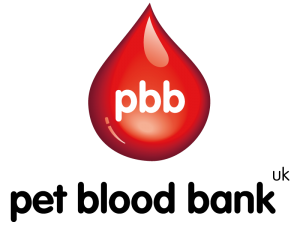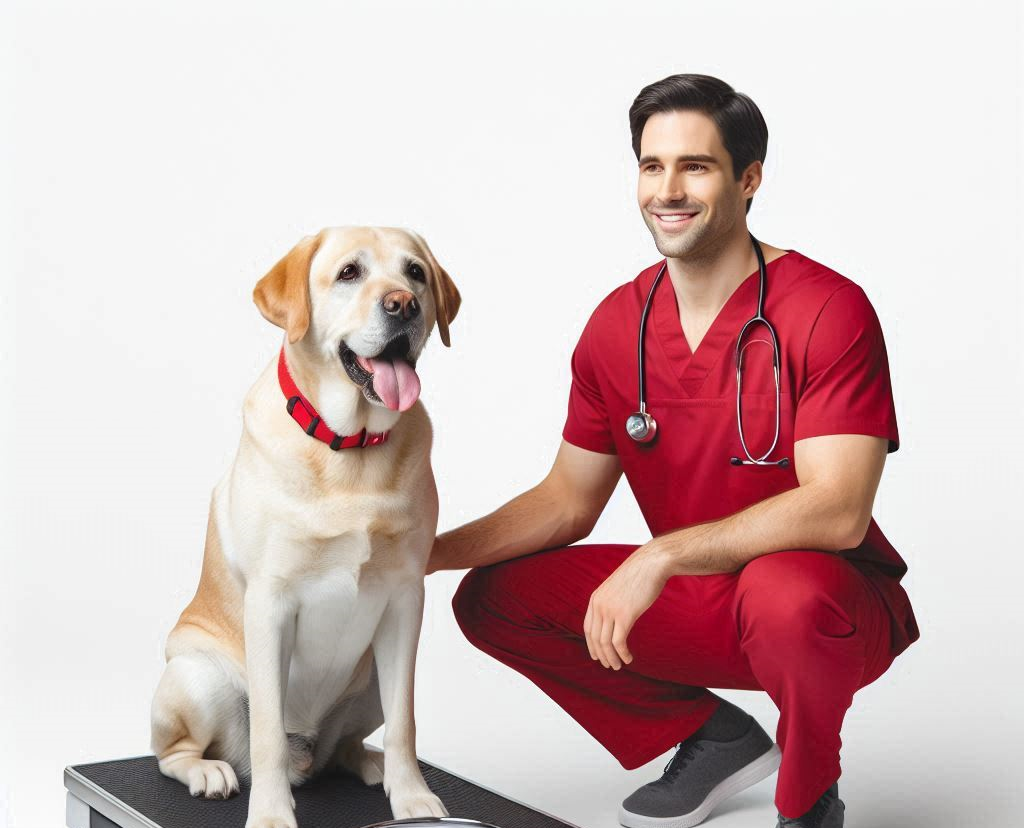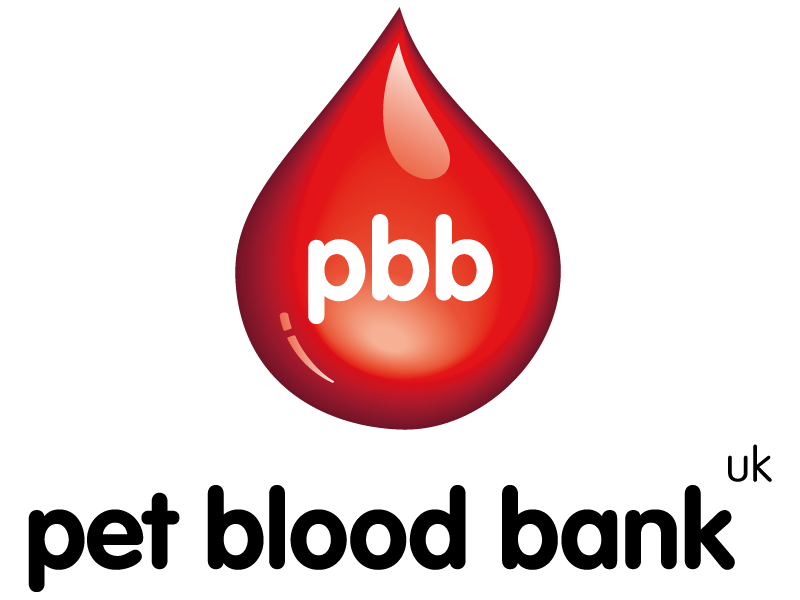SOP/COL/05/14 – Blood Collection Canine (Collection Team)
This SOP covers our blood collection process and it is important that all members of the collection team are familiar with this process irrespective of their role. Please begin by reading the SOP before progressing through the rest of the lesson.
Below is the link to one of our information documents explaining how to heat seal the collection lines after donation. Please read the document before moving on.
INF/EQU/17/04 Line Sealing Methods
It’s important that the donation experience is a pleasant one for our donor dogs. With the owner’s permission, the dogs should be offered treats in pre-screen, the donation room and in post donation. However, donors SHOULD NOT BE GIVEN ANYTHING TO EAT OR LICK DURING DONATION whilst held in lateral recumbency to avoid the risk of choking.
Handling of Donor Dogs
Normally a Collection Team consists of 5 members. These are a Veterinary Surgeon, and either 2 Phlebotomists and 2 Donor Assistants or 1 Phlebotomist and 3 Donor Assistants.
Sometimes, due to low donor numbers on a session, the team will be reduced in size to either 3 or 4 members.
When 4 members of staff are present there will be one Donor Assistant and the Veterinary Surgeon in pre-screen. Once the donor has passed pre-screen then the Donor Assistant will accompany the dog through to the Donation room and will become part of the Donation Room team.
When 3 members of staff are present the Donor Assistant and Veterinary Surgeon will work in pre-screen together and once the donor has passed pre-screen, both the Donor Assistant and Veterinary Surgeon will form part of the Donation team with the phlebotomist.
For 3 and 4 member teams, the appointment times will have been adjusted to allow for the dogs to attend at 30-minute intervals instead of the 15-minute intervals used when a full team is working.
No matter whether a 3, 4 or 5 person team is working on a session, a dog will always be held by 2 members of staff whilst the phlebotomist is taking the donation from the donor.
A dog should always be lifted on and off the table by at least 2 people.

The below video training clip demonstrates the correct technique for lifting and removing donors on and off the phlebotomy table.
The password is: Lift1
The following video clip demonstrates how to raise the jugular vein so that it fills and becomes more prominent ready for donation.
The password is: Raise1
Here is a link to the information document that explains how to set up the blood bag ready for donation. It is always a good idea to have two quad bags prepared for each donor as both may be required and the noise that the packaging makes when it’s opened can be unsettling for some dogs.
Guide to setting up the Quad Collection Bag
Here is a video that shows the set up process
Overdraws
An overdraw is when too much blood is collected from the donor. This does not happen often, but it can have serious consequences for the donor and the organisation. Our blood bank license allows us to collect 450ml (a 570 gram) donation from our donors. This is considered a safe and tolerable volume for large dogs. Volumes above this can cause a hypovolaemia that the donor cannot compensate for and this could result in collapse. All overdraws must be reported to the Veterinary Medicines Directorate (VMD) who can take action against PBB for breaching our licensing conditions.
Overdraws are accidental, but there are some simple things that can be done to prevent it from happening:
- Always check the scales are set to zero before placing empty pack number 1 on the scales.
- Phlebotomists must always remove the pack and check the scales are at zero and then replace the pack confirming the weight is as expected (around 92g) IMMEDIATELY PRIOR to beginning any donation. Sometimes scales can be knocked or the power supply interrupted resulting in the scales not reading the correct weight.
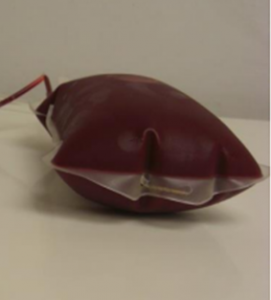
The donation team get to know the usual rate of blood collection and how long it takes to reach a standard donation and also what a 570 gram draw looks like. If you think the donation is taking too long considering the flow rate or you look at the donation bag and it looks fuller than usual (as shown in the image) then STOP the donation or tactfully raise your concern with the phlebotomist. Ultimately, responsibility for the volume of blood collected lies with the phlebotomist taking the donation.
Please take a look at the information document that relates to under and over draws.
Under and Over Draw Information
Indicating Units for Quarantine
As we have learnt earlier in the course, units must be quarantined in some situations. We indicate this on the unit label with a red dot, but also on the donor’s Donation Day Record. Some situations that require a unit to be quarantined will arise in pre-screen and will need to be actioned by the veterinary surgeon and others will arise in donation and the phlebotomist will need to quarantine the unit.
Quarantining in Pre-screen
The vet on session should indicate a unit is for quarantine by selecting the appropriate box in the quarantine section of the Donation Day Record. Quarantine is required for ALL donors that are having a screen carried out and also in any situation where there is an unresolved query over the health status or history of the donor that might impact on the safety of the blood product. An example being the donor had a lumpectomy performed at their usual vets and histology was performed but we have not seen these results and need to confirm the lump is not malignant.
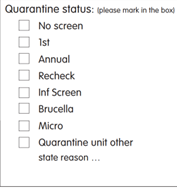
Quarantining in Donation
In donation a unit would need to be quarantined if the phlebotomist has requested a micro screen be performed on the unit.
The phlebotomist must request a microbiology screen if the collection set has been open to the air (Air In Line (AIL)) at any point before, during or after blood collection. The blood unit must then be quarantined pending the micro result. Situations that would allow air to enter the collection set would include:
- failure to close the blue clamp on the collection line at the correct times. The blue clamp to the collection line must be closed before the needle cap is removed from the collection needle and before the needle exits the donor’s skin. If this is not done, the collection system will be open to the room air which will unavoidably enter the system and there is the potential for pathogenic microorganisms to enter the collection system along with the air.
- failure of the permanent line seal on the collection line
- if a donor moves during collection and the needle inadvertently exits the skin when the blue clamp is still open
Micro screens are very expensive so they should only be requested when needed and it is best to avoid allowing air into the system in the first place. The phlebotomist should also check that the quarantine box has been completed for donors having a screen and if missed tick the appropriate box.
The Use of Treats on a Donation Session
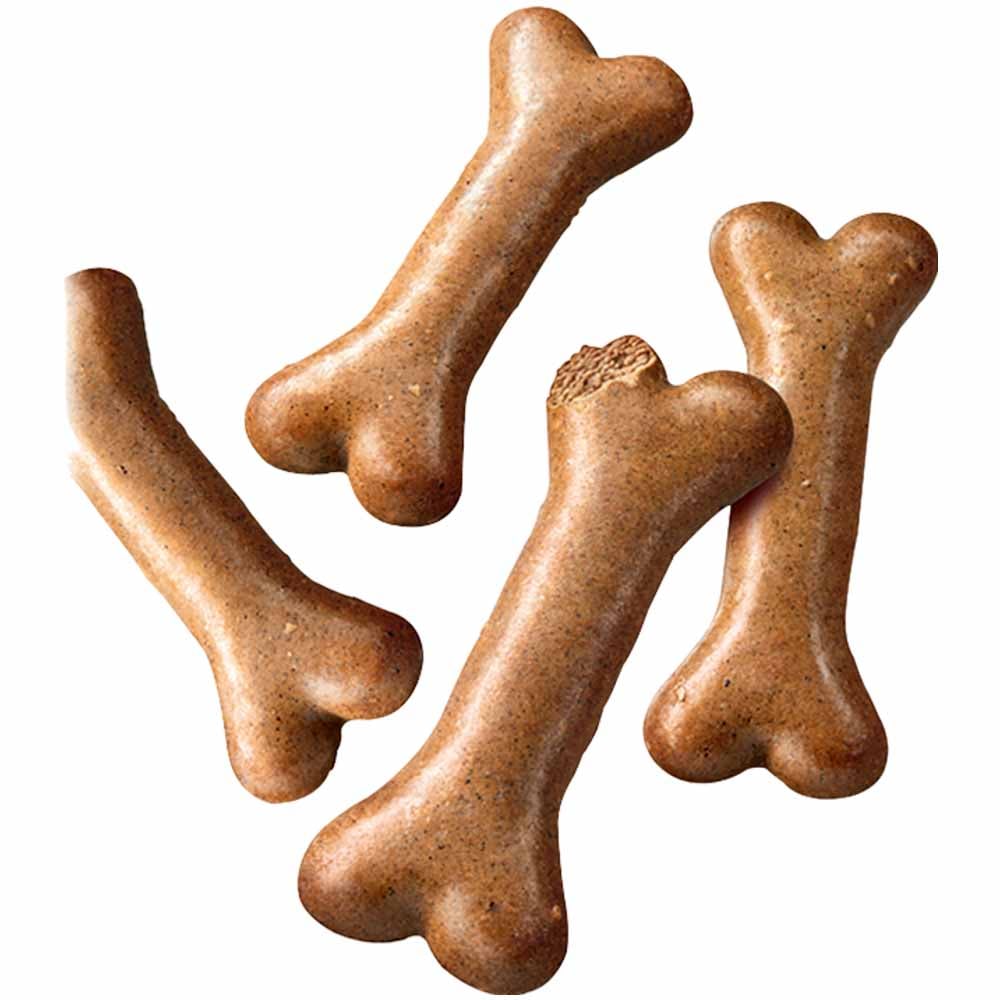
Donors should be offered unlimited treats (following owner consent) either using PBB treats or the donor’s own treats.
Whilst it can be tempting to bring along dog treats to a session to give to our amazing donors it is not allowed and the donors must only be fed treats provided by PBB or their owners.
